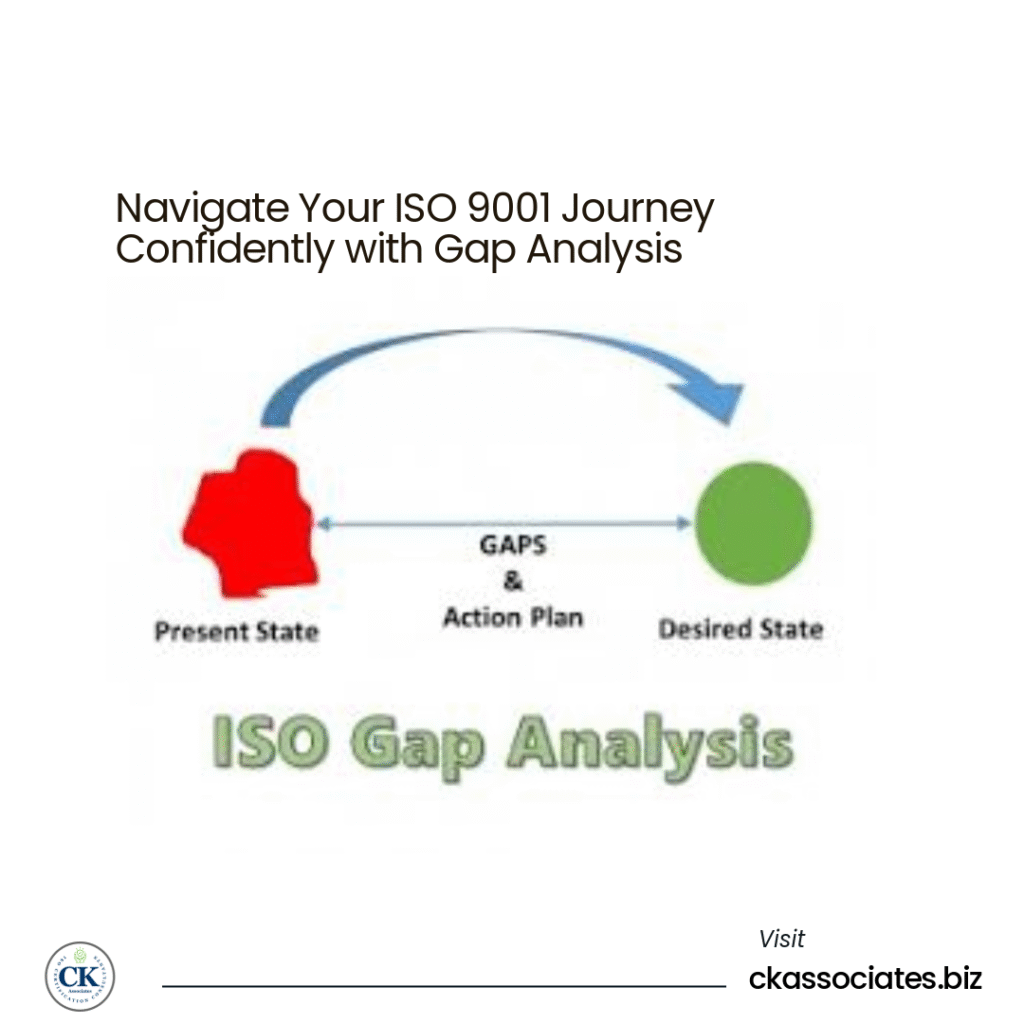Why Start with a Gap Analysis?
Before you can implement ISO 9001, you need to understand where your organization currently stands. That’s where an ISO 9001 Gap Analysis becomes essential. It’s a structured assessment that compares your current quality management system (QMS) against the ISO 9001:2015 requirements. The goal? To identify what’s in place, what’s missing, and what needs improvement.
Think of it as a strategic roadmap—not just a compliance checklist. Without it, companies risk spending time and resources in the wrong areas or failing audits due to unforeseen gaps.
What Does ISO 9001 Gap Analysis Cover?
A typical ISO 9001 Gap Analysis assesses your business’s:
- Documentation and Records (policies, procedures, manuals)
- Management Roles and Responsibilities
- Risk Management and Context of the Organization
- Process Controls and Planning
- Customer Feedback and Satisfaction
- Monitoring, Measurement, and Improvement Activities
- Internal Audit and Review Systems
Each area is evaluated against ISO 9001:2015’s seven key clauses to uncover gaps and prioritize actions.
Benefits of Performing a Gap Analysis
A thorough ISO 9001 Gap Analysis brings multiple advantages:
✅ Clarity: Understand exactly where you stand ✅ Efficiency: Focus efforts only where needed ✅ Risk Reduction: Catch nonconformities early ✅ Resource Planning: Allocate people, time, and money effectively ✅ Audit Readiness: Boost confidence before certification audits
It gives your organization a powerfully positive start by turning ambiguity into actionable insights.
Gap Analysis vs. Internal Audit – What’s the Difference?
While both involve assessing your systems, a Gap Analysis is typically a one-time, pre-implementation review that identifies where you’re falling short of ISO 9001 requirements.
An internal audit, on the other hand, is a routine activity post-implementation that checks if your QMS is working effectively.
Gap Analysis = Where you stand now.
Internal Audit = How well you’re performing ongoing.
Both are crucial—but you begin with the former.
How CK Associates Conducts Gap Analysis
At CK Associates, our Gap Analysis is precise, professional, and personalized. Here’s what our proven process looks like:
- Initial Consultation: Understand your business goals and operations
- On-Site or Remote Assessment: Evaluate systems, documents, and processes
- Compliance Scoring: Rate your readiness clause-by-clause
- Action Plan: Deliver a detailed roadmap for ISO 9001 implementation
- Support & Recommendations: Get expert tips on quick wins and long-term fixes
With 390+ successful certifications and over 17 years of ISO consulting experience, we help you start strong and stay on track.
Common Gaps We Find
Our consultants often uncover recurring issues like:
- Lack of documented procedures
- No formal risk management framework
- Unclear quality policy or objectives
- Inconsistent customer feedback mechanisms
- Poor internal audit frequency or documentation
Identifying these early saves organizations from costly mistakes later.

When Should You Perform a Gap Analysis?
Right now. If you’re:
- Thinking of getting ISO 9001 certified
- Already implementing ISO but unsure of your progress
- Preparing for an external audit
- Merging with other ISO standards like ISO 14001 or ISO 45001
A Gap Analysis is your starting point.
Final Thoughts
An ISO 9001 Gap Analysis is not just a smart move—it’s a strategic advantage. It lays the foundation for a focused, efficient, and cost-effective path to certification.
Don’t let guesswork derail your ISO journey. Start with certainty. Partner with CK Associates and let our experts guide your business with clarity and confidence.
